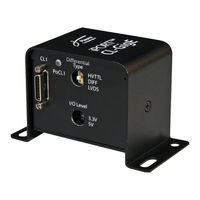Pleora Technologies iPORT CL-GigE Manuals
Manuals and User Guides for Pleora Technologies iPORT CL-GigE. We have 2 Pleora Technologies iPORT CL-GigE manuals available for free PDF download: User Manual
Pleora Technologies iPORT CL-GigE User Manual (164 pages)
External Frame Grabbers
Brand: Pleora Technologies
|
Category: Media Converter
|
Size: 3 MB
Table of Contents
Advertisement
Pleora Technologies iPORT CL-GigE User Manual (118 pages)
Brand: Pleora Technologies
|
Category: Media Converter
|
Size: 2 MB
Table of Contents
Advertisement
Related Products
- Pleora Technologies iPort
- Pleora Technologies iPORT CL-Ten
- Pleora Technologies iPORT NTx-Ten
- Pleora Technologies iPORT NTx-GigE
- Pleora Technologies iPORT SB-GigE
- Pleora Technologies iPORT CL-Ten Dual Medium
- Pleora Technologies iPort SB-Pro
- Pleora Technologies iPORT Analog-Pro IP Engine
- Pleora Technologies iPORT NTx-Mini-S
- Pleora Technologies iPORT NTx-Mini

